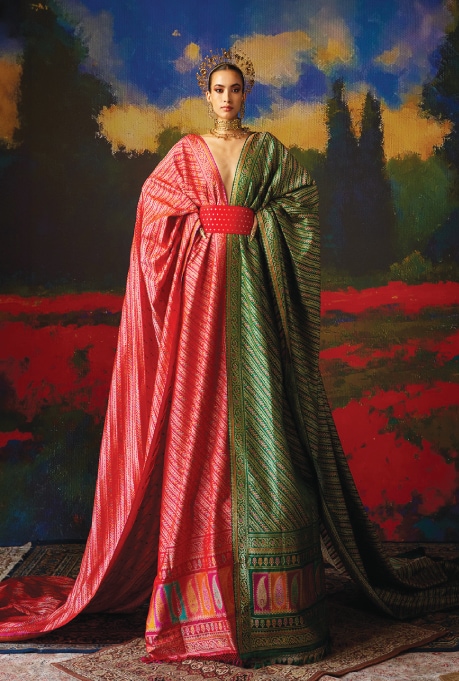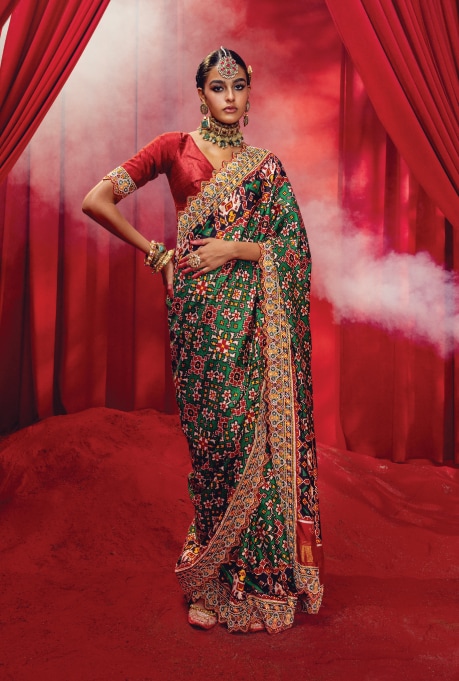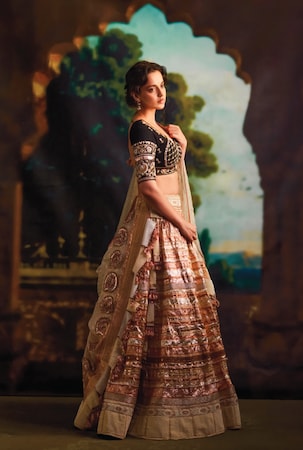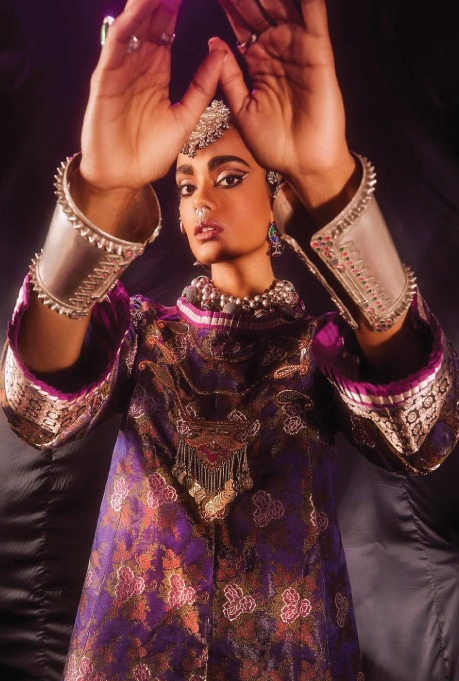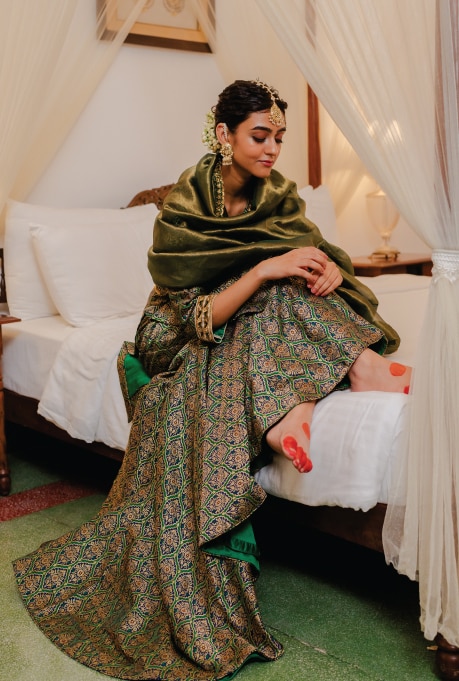In the diverse cultural canvas of India, textiles stand out as a vibrant thread that weaves together tradition, artistry, and history. From the shimmering silks of Varansi to the intricate weaves of Kanchipuram, India’s age-old textiles have long been celebrated for their exquisite craftsmanship and timeless character.
In fashion, trends ebb and flow like the rhythmic waves of an ocean, perpetually in motion. Each passing year ushers in a fresh deluge of styles, colours, and silhouettes, painting a dynamic tableau of an ever-evolving industry. This year, however, there is a palpable buzz in the air, a sense of something extraordinary on the horizon. Designers, the modern-day alchemists of style, are plunging into the heritage trove of India’s textiles, unearthing treasures long forgotten. They are resurrecting age-old weaving techniques, intricate embroideries, and indigenous prints, infusing them with a deft touch that captivates the imagination.
This year, we bear witness to a new generation of Indian designers who are embracing these heritage textiles, breathing new life into ancient techniques and designs, and ushering in a renaissance of India’s textile legacy. Their creations are not mere garments; they are works of art that pay homage to the rich artisanal heritage of the country
A Rich Textile Legacy
India’s textile heritage dates back thousands of years, with a rich blend of fabrics and techniques that reflect the country’s diverse cultural and regional influences. Each region of India has its unique textile tradition, from the ikats of Gujarat to the kanthas of West Bengal, showcasing a stunning array of colours, patterns, and textures.
Fabrics such as silk, cotton, and khadi, which have stood as the pillars of Indian textiles for centuries, are experiencing a renaissance. In recent years, there has been a renewed interest among Indian designers in reviving age-old textiles and techniques like chikankari and kalamkari into their collections. The finest couturiers of the country, like Sabyasachi Mukherjee – known for his bandhani and zari work, Anita Dongre – for her collections rooted in Indian crafts and Ritu Kumar – lauded for her love for royal courts of Rajasthan, have played a pivotal role in this revival.
One of the most iconic textiles of India is the luxurious Benarasi silk, renowned for its intricate brocade work and timeless appeal. Woven in the city of Varanasi, these silks have been prized for centuries for their exquisite craftsmanship and opulent designs, making them a staple in Indian bridal wear and occasion wear. Its origins can be traced back to the Mughal era, when skilled artisans were brought to Varanasi to weave fabrics for the royal court. Over the centuries, the art of Benarasi weaving has been passed down from generation to generation, with weavers painstakingly creating each piece by hand, often taking weeks or even months to complete a single saree.
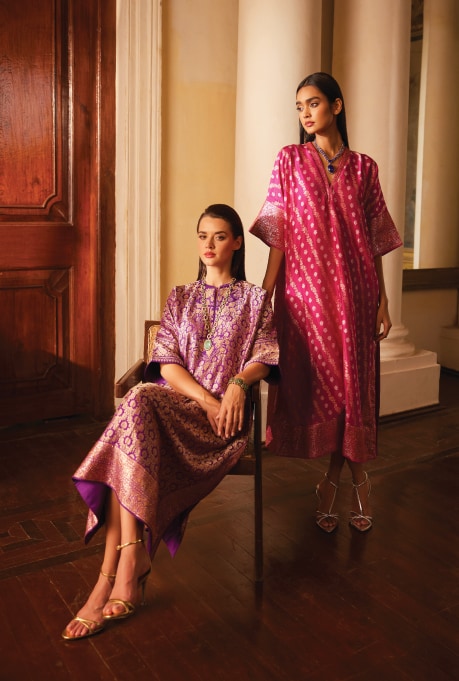
Kaftans 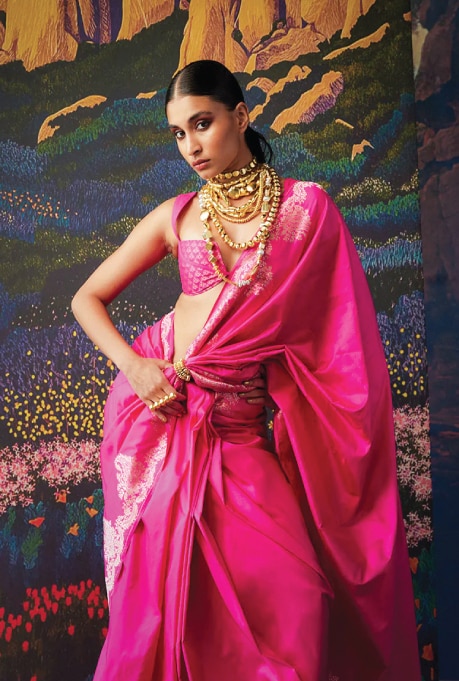
Handwoven Saree
What sets Benarasi silk apart is its intricate brocade work, which is characterised by gold and silver threads woven into the fabric to create elaborate designs. These designs often feature motifs inspired by Mughal art and architecture, such as floral patterns, peacocks, and paisleys, giving the fabric a regal and timeless appeal. Homegrown designer labels are not merely utilising these fabrics in their pure form but are also ingeniously blending them with modern materials to craft innovative textures and finishes. Instead of merely replicating the past, they are reinterpreting these textiles in contemporary designs, combining tradition with modernity to create something truly unique. By infusing these textiles with modern silhouettes and designs, they are not only keeping these traditions alive but also introducing them to a new generation of fashion enthusiasts.
At the heart of India’s textile resurgence lies a deep reverence for the intricate crafts and techniques that are integral to creating these timeless textiles. We are witnessing a renaissance where age-old techniques and motifs are not just revived but reinterpreted and reimagined in contemporary designs, creating a sartorial narrative that resonates deeply with our cultural ethos. It is captivating to see how designers are breathing new life into immemorial patterns and techniques. Ancient designs like paisleys, floral motifs and geometric shapes, and embroidery techniques such as aari, chikankari, and zardozi, which have been handed down through generations of artisans, are given a modern twist, adorning everything from sarees to jackets to accessories.
The Future of Indian Textiles
As we look to the future, the resurgence of traditional Indian textiles and crafts is more than just a passing trend; it is a movement—a celebration of our rich cultural heritage and a reclamation of our identity. It reminds us that fashion is not merely about what we wear but also about who we are, where we come from, and the values we hold dear.
By incorporating these traditional textiles, age-old designs and techniques into their collections, designers are not only preserving a rich cultural legacy but also giving it a new lease on life. They are ensuring that these traditions continue to thrive in a modern world, where fast fashion often threatens to overshadow the artistry and craftsmanship of traditional textiles. With their innovative designs and commitment to sustainability, labels and designers are paving the way for a culturally rich industry that celebrates the past while embracing the future.
